
Even when it's clear and brothy, a well-made soup conveys an impression of richness and fullness in your mouth. That desirable mouthfeel is created by natural gelatin, simmered from the bones and connective tissues of meat, fish or poultry when you make the broth. It only thickens a soup slightly, but makes a profound difference to its character. If your own broth lacks richness from naturally occurring gelatin, you can enrich and thicken it by adding extra gelatin after the fact.
Gelatin Basics
Gelatin is a protein extracted from collagen, found in the hooves, hides and connective tissues of animals. It's especially rich in young animals, which is why chefs favor veal bones for making stock. Most proteins in meats are bound up into relatively tight molecules, which contract when heated and give the meat a firm texture. Gelatin is different, forming long strands that bond together and create an invisible mesh in the liquid. As long as your soup stays warm, the gelatin simply gives the broth an impression of "body." As it cools, the proteins solidify, trapping and immobilizing the liquid like an invisible three-dimensional sponge.
Playing With Concentration
When you're working with gelatin, the crucial step is determining how much to use. One standard-sized envelope of powdered gelatin, containing two teaspoons, will set a cup of liquid to a very firm gel. It makes a softer gel in two cups of liquid, and one that barely holds its shape in three. To gently thicken and enrich a soup or stew, that same envelope of gelatin is enough to lend body to four to six cups of liquid. If your own broth was almost but not quite rich enough, you can stretch it as far as eight cups of liquid.
Putting It to Work
Before you can use the gelatin, it must soften or "bloom." Sprinkle your envelope of unflavored gelatin powder over 1/4 cup cold water, and let it sit until the powder has swollen and become fully hydrated. Whisk the softened gelatin into a cup of hot broth from the soup or stew, then stir it into the pot. Continue stirring until the gelatin is completely dispersed and dissolved. If the vegetables in your soup or stew are fragile after cooking, drain off most of the broth and add it back once the gelatin is dissolved. That way you won't break up the vegetables and spoil the appearance of your finished dish.
Jellied Consomme
Although most soups are served hot, one classic preparation is intended to be served both cold and congealed. Jellied consomme isn't firm, like the familiar gelatin-based desserts. It should hold its shape in the bowl, but melt immediately in the warmth of your mouth. If you'd like to try it, choose a consomme recipe and focus on getting your broth absolutely crystal clear. When it's finished, spoon a small amount onto a chilled plate. If it doesn't set from its own natural gelatin content, stir in a quarter-envelope of bloomed gelatin and try again. Once you've got the right amount of gelatin, pour the consomme into small bowls, garnish it if you wish, and chill it until it sets.
Related Articles

Can You Thicken Alcohol With Gelatin?
Calories in Egg Flower Soup

How to Thicken Sauce With Powdered ...

Can I Use Baking Powder to Thicken ...

How to Thicken the Stock of Chicken & ...

How to Thicken a Watery Beef Stew
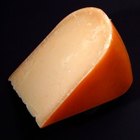
What Is Animal Rennet?
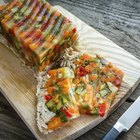
How to Make and Use Aspic

Ingredients of Gelatin
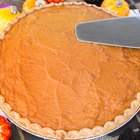
How to Make Pumpkin Pie

How to Substitute Potato Starch for ...
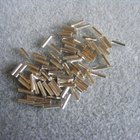
How to Make Liquid Silver Jewelry
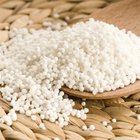
What Is the Nutritional Value of ...

What Are the Functions of Gelatin?

Corn Starch Vs. Rice Flour As ...

How to Harden Up Whipped Cream

Can You Thicken Soup With Xanthan Gum?

Composition of Monosodium Glutamate

Merle Norman Ingredients

Do You Use Flour or Corn Starch to ...
References
- On Food and Cooking: The Science and Lore of the Kitchen; Harold McGee
- On Cooking: A Textbook of Culinary Fundamentals; Sarah Labensky
Writer Bio
Fred Decker is a trained chef and prolific freelance writer. In previous careers, he sold insurance and mutual funds, and was a longtime retailer. He was educated at Memorial University of Newfoundland and the Northern Alberta Institute of Technology. His articles have appeared on numerous home and garden sites including GoneOutdoors, TheNest and eHow.
Photo Credits
Jupiterimages/Photos.com/Getty Images